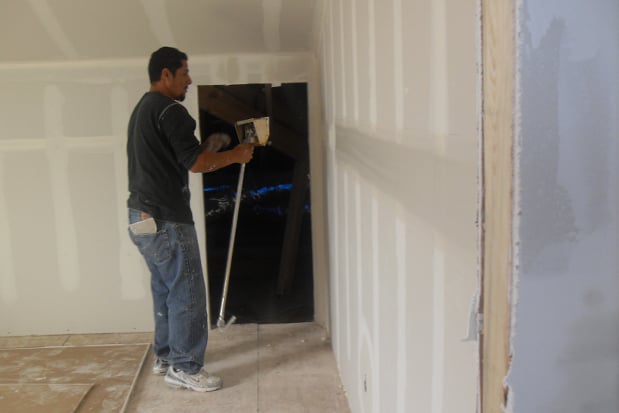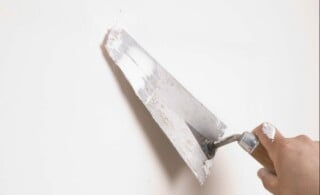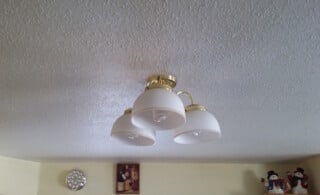
Drywall repair is a project that most homeowners will have to face at one time or another. It encompasses a wide range of problems that include everything from nail pops to holes from doorknobs to major repairs like water damage and cracks caused by a settling foundation. Whatever your problem is, it’s important to understand the scope of the repair so that you don’t get in over your head if you’re a do-it-yourselfer.
How Hard Is Drywall Repair?
That’s a good question. For small holes and other minor repairs, it’s a fairly manageable undertaking. A stubborn DIY with the right set of tools can usually patch things up very satisfactorily. The big question to ask yourself is how perfect you want your drywall repair to look? The truth of the matter is that drywall work requires more skill than most people give it credit for, meaning that most DIYers simply don’t have the experience to perform a seamless drywall repair. Bigger projects often end up as glaring blemishes, even after the paint is applied, and even smaller repairs can stand out if your walls are textured or if you don’t have experience wielding plaster and a trowel.
Holes
Holes in drywall are a good example. The small holes caused by doorknobs are within reach for most do-it-yourselfers. Because they cover a limited amount of space, they can easily be plastered over and repainted without creating a blemish that too many people will notice. Get much bigger than that, however, and you’re talking a more extensive repair that includes cutting out a piece of your drywall, applying a patch to the wall, and then a good amount of trowel work to cover the seams. Follow that with the task of recreating the texture of the rest of the wall, and most homeowners choose to go with a professional to ensure these larger projects are as inconspicuous as possible once they’re finished.
Nail Popping
Another common drywall repair is nail or screw “popping.” This is when the nails or screws holding the drywall in place begin to “pop” through the plaster and paint hiding them. The easy part of these repairs is knocking the nail back in place or screwing the screw in tighter. After that you’ll have to work with plaster and a trowel to cover up the nail holes so that all traces of the popping are concealed. And it gets even more complicated if your walls are textured with orange peel or plaster texturing techniques. Texturing requires an intimate knowledge of drywall along with specialized equipment, and makes even the simplest repairs fodder for the experts.
Ready to start your Drywall Repair?
Find ProsThe Big Stuff
Not everyone is lucky enough to experience the above mentioned “minor” drywall repairs. If your drywall has experienced extensive water damage, or if you’re seeing cracks caused by the shifting and settling of your foundation, then you definitely want to call in a professional. These problems require everything from large patch jobs to complete replacement of the damaged drywall. And since water damage often occurs around showers and tubs, calling in an expert who is familiar with installing waterproof backing is an important step to ensure serious structural water damage won’t be a problem in the near future.
Final Thoughts
If you’re in need of drywall repair beyond the simplest of jobs, it’s best to talk to an experienced contractor to get the job done. And if you’ve got a plaster repair job, be sure to contact someone who has done that type of work before. Plaster repair presents an entirely different bunch of obstacles that only an experienced repairman will know how to address.
Be it cracks caused by a shifting foundation or just an annoying drywall blemish, contact a specialist experienced in the repair of drywall to get your job done right.
 Drywall Finishing: Don’t Ruin the Ending!
Drywall Finishing: Don’t Ruin the Ending!  Guide to Repairing Drywall Cracks & Holes
Guide to Repairing Drywall Cracks & Holes  How to Remove a Textured Drywall Ceiling
How to Remove a Textured Drywall Ceiling  3 Simple Ways to Transform a Room on a Budget
3 Simple Ways to Transform a Room on a Budget  Decorative Moldings: The Perfect Cover-up
Decorative Moldings: The Perfect Cover-up 

Are You Familiar With This Topic? Share Your Experience.